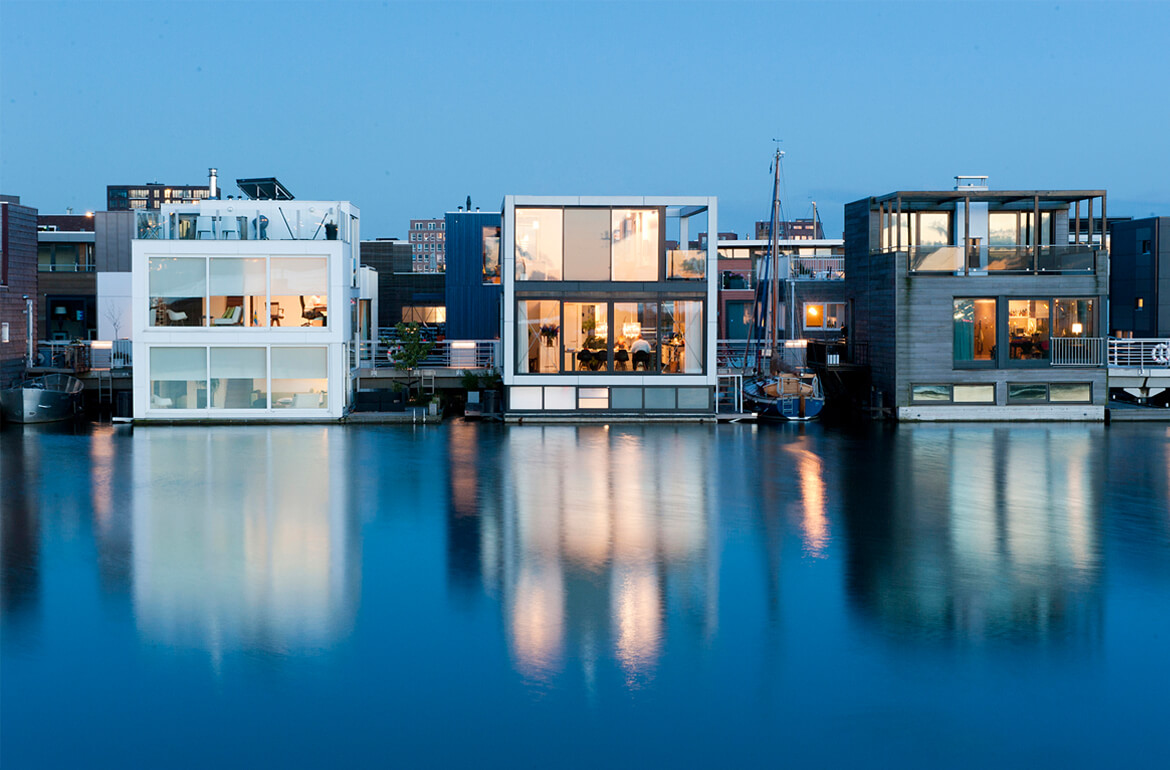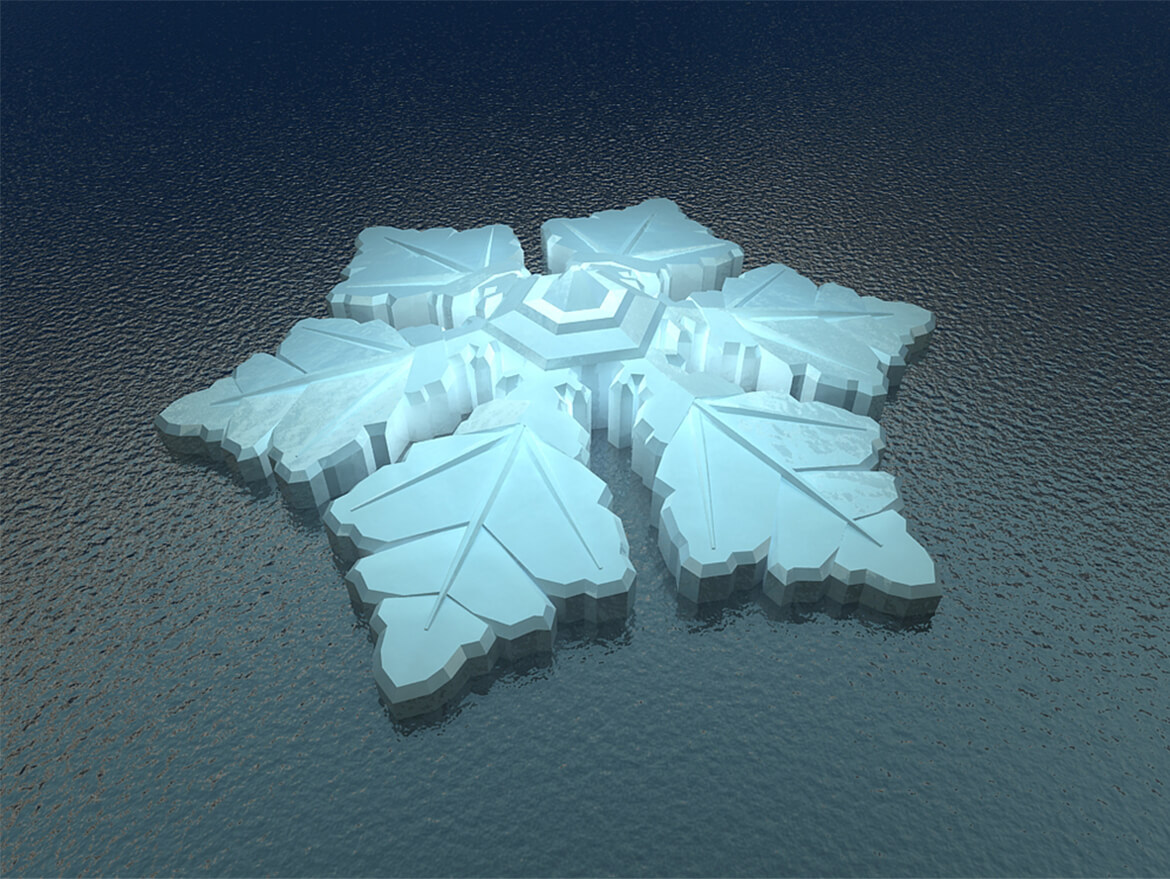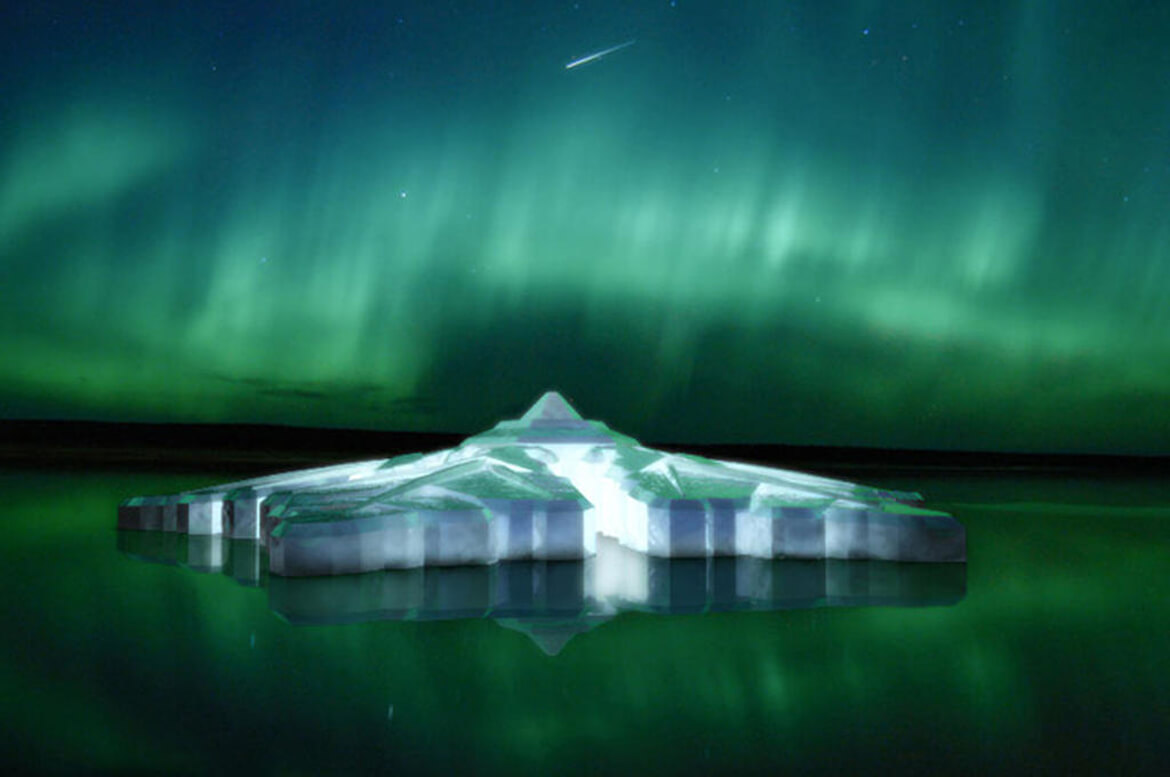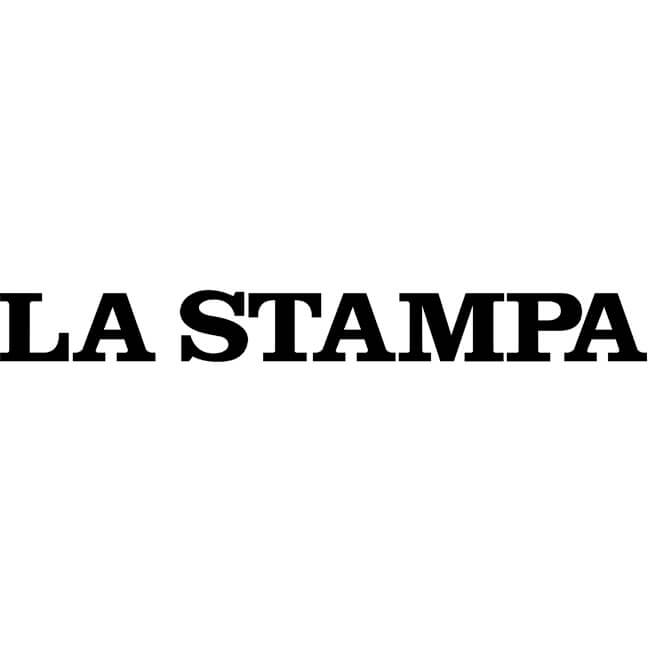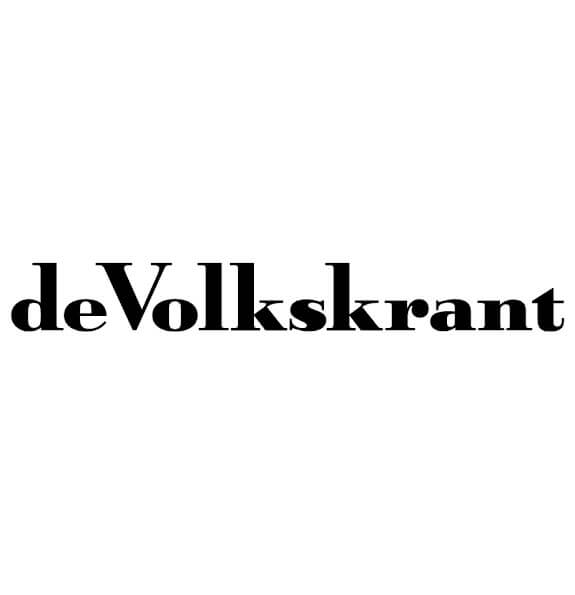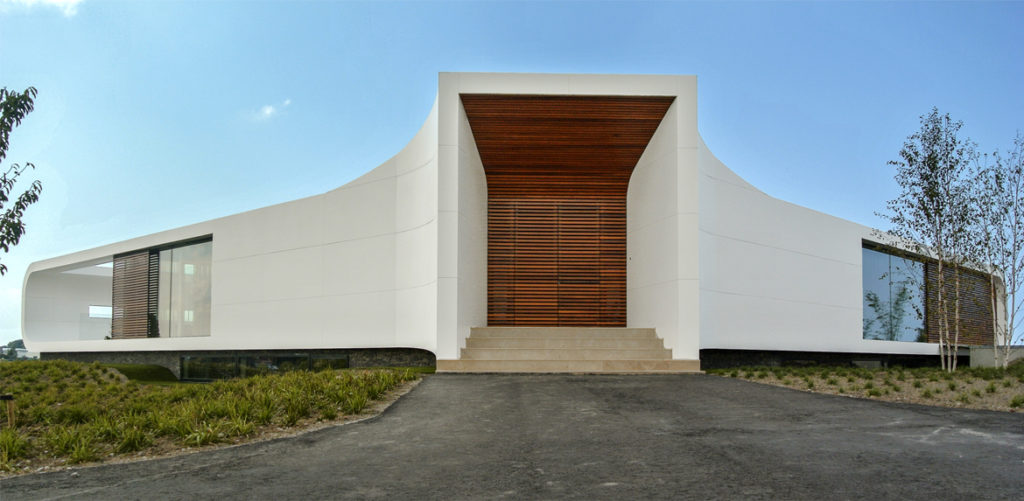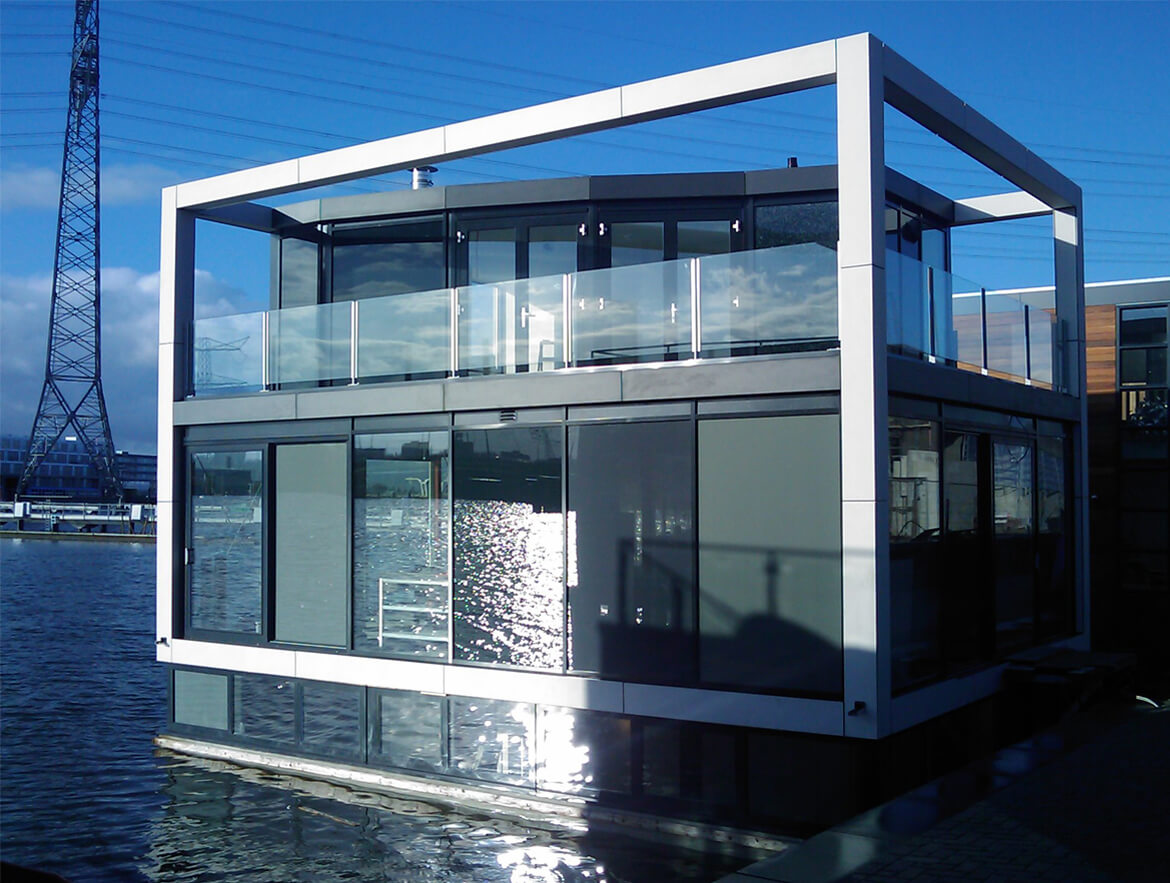La torre acquatica che ospita la biodiversità
By Giulia Mattioli
La Stampa
October.2014
Sea Tree. Un progetto innovativo per preservare la flora e la fauna selvatiche sfruttando le grandi aree marine e lacustri
Navigare sul sito web di Waterstudioè un notevole viaggio della mente: i loro progetti architettonici, alcuni davvero visionari, si legano indissolubilmente all’elemento acquatico. Case galleggianti, palazzi sottomarini, strutture che funzionano dentro e fuori dall’acqua: se lo scenario del film ‘Waterworld’ si realizzasse veramente, loro saprebbero come adattarvisi. Il confine tra terra e mareper Waterstudio non è un limite, ma una nuova frontiera da esplorare, anche in coscienza del cambiamento climatico e dell’espansione degli agglomerati urbani.
Tra i progetti più audaci e affascinanti dello studio di architettura olandese c’è Sea Tree®, una sorta di palazzo galleggiante che svetta sull’acqua, adibito a giardino dove trovano ospitalità diverse specie animali. Non è un progetto per gli umani, ma per la flora e la fauna costantemente minacciati dall’espansione urbanistica, i cui habitat vengono ristretti e alterati di anno in anno in favore delle necessità della modernizzazione. Conservare la fauna selvatica di ogni territorio è fondamentale, ma l’espansione delle città non ne tiene particolarmente conto, ed ecco che i laghi, i fiumi, i mari potrebbero diventare il luogo dove preservare uccelli, insetti, pipistrelli e piccoli mammiferi.
Sea Tree è un grattacielo di biodiversità, che si può collocare benissimo accanto ad un’area urbana, ma nei suoi bacini idrici, in modo da rimanere isolato e protetto dall’avanzata del cemento. Si tratta di una struttura in acciaio, galleggiante, composta di strati di vegetazione, giardini verticali che provvedono alla sussistenza delle specie animali, che includono dei piani sommersi per piccole creaturine acquatiche e, se la latitudine lo permette, per barriere coralline artificiali, habitat a loro volta per centinaia di esseri viventi. Naturalmente in base alla posizione, alla profondità delle acque, alle mareggiate, alle correnti, alle temperature ogni Sea Tree avrebbe altezze e caratteristiche differenti.
Dal punto di vista della tecnica, Sea Tree si basa su una progettazione molto simile a quella delle piattaforme petrolifere offshore, e proprio alle grandi compagnie si rivolgono i membri di Waterstudio per caldeggiare la realizzazione di un ‘condominio’ marittimo per animali. Oltre alle loro torri di stoccaggio e le loro piattaforme, perché non donare alla natura e alla comunità un Sea Tree, fosse anche solo per dimostrare un po’ di buona volontà nel rendere il mondo che tanto sfruttano un posto migliore? Un progetto forse visionario ma assolutamente innovativo per far luce sulla necessità di proteggere la flora e la fauna selvatica di ogni angolo del Pianeta dove vi sia sufficiente acqua per realizzarlo. E considerata la grande esperienza che ingegneri, architetti, tecnici olandesi hanno nel confrontarsi con l’acqua e con i territori dove terra e mare si fondono, a cui si aggiunge il fatto che le torri per lo stoccaggio del petrolio in mare già esistono, i progettisti di Sea Tree hanno ‘semplicemente’ adattato, modificato le tecnologie già esistenti per fare un favore alla natura.

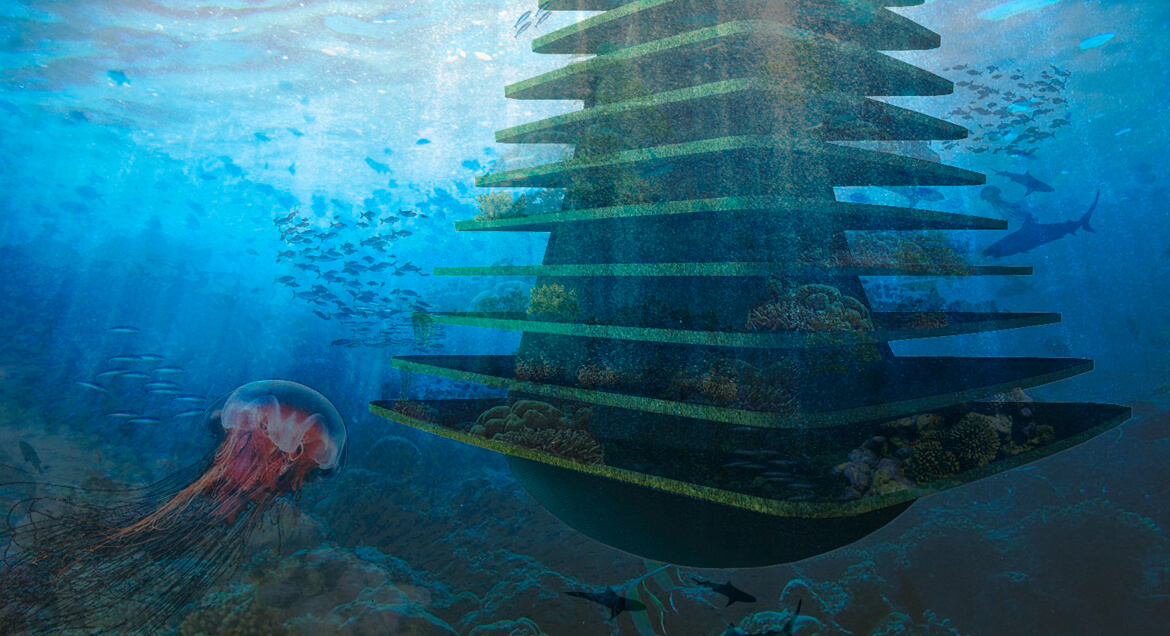
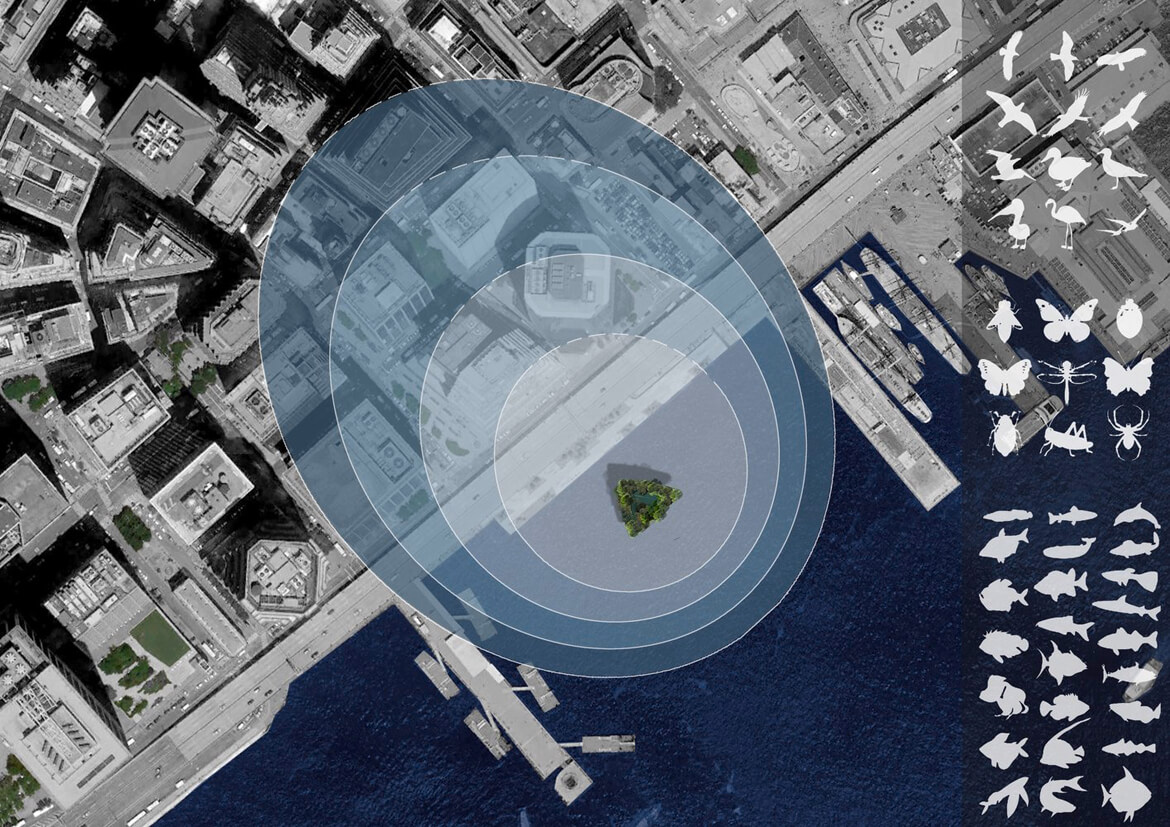
Mega engineering Cities at See
Discovery Channel Mega engineering Cities at See.
Click here to visit our Youtube channel
New Water Villa: ver van de functionele Nederlandse architectuur
By Bob Witman
Volkskrant
October.2014
Opgetrokken uit corian in plaats van baksteen, bochtig in plaats van strak. Tussen de kassen van Naaldwijk staat een fraai ‘net geen herenhuis’.
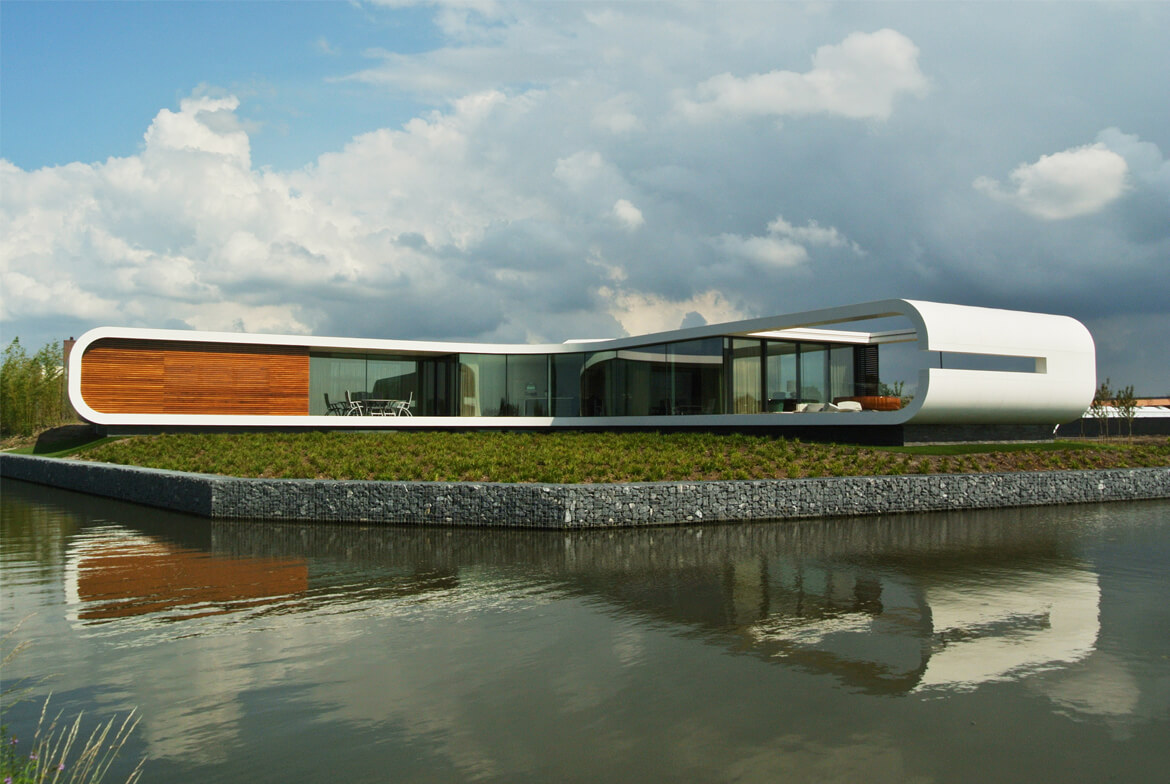 De New Water Villa. Beeld Koen Olthuis
De New Water Villa. Beeld Koen Olthuis
Het ziet eruit als een villa waar James Bond graag cocktails drinkt, met precies de goede space age-achtige uitstraling die zo populair was in jaren zestig, toen we de maan bewandelden. New Water Villa ligt in de polder bij Naaldwijk, verscholen achter kassen. Een woning in de vorm van een boemerang, geheel opgetrokken uit wit corian, een composiet dat vrijwel alleen nog wordt toegepast als meubelmateriaal. Met zijn U-vormige hoeklijsten oogt de bungalow als een sexy ufo.
New Water Villa is een ontwerp van Koen Olthuis van architectenbureau Waterstudio. Net als een ander, onlangs gebouwd spectaculair woonhuis, Villa Kogelhof van Paul de Ruiter Architecten in Zeeland, is ook deze villa het resultaat van dapper particulier opdrachtgeverschap. Olthuis kreeg van de bewoners de vrije hand: het huis, het interieur en de tuin: hij mocht het allemaal vormgeven. De kwekersfamilie uit Naaldwijk wilde een herenhuis, maar liet zich verrassen.
Een herenhuis is het niet geworden. Ze kregen geen baksteen, maar wit composiet met glas en hout. Geen rechte plattegrond met gangen en kamertjes, maar golvende vertrekken die naadloos in elkaar overlopen. Geen oprijlaan met klinkers, maar asfalt. Geen Franse siertuin, maar kunstgras en hier en daar een polletje groen.
Architect Olthuis bouwt niet vaak op land. Zijn niche is drijvende architectuur. In Nederland, maar ook in het buitenland, waar hij het materiaal corian eerder toepaste voor stadsbouw op water bij de laaggelegen Malediven.
Corian is een relatief nieuwe kunststof, althans, in het buitengebruik. Dat is altijd tricky, omdat het onzeker is hoe het veroudert. Maar corian is keihard, duur, polijstbaar en houdt zich volgens Olthuis uitstekend, zelfs in een zoutwateromgeving.
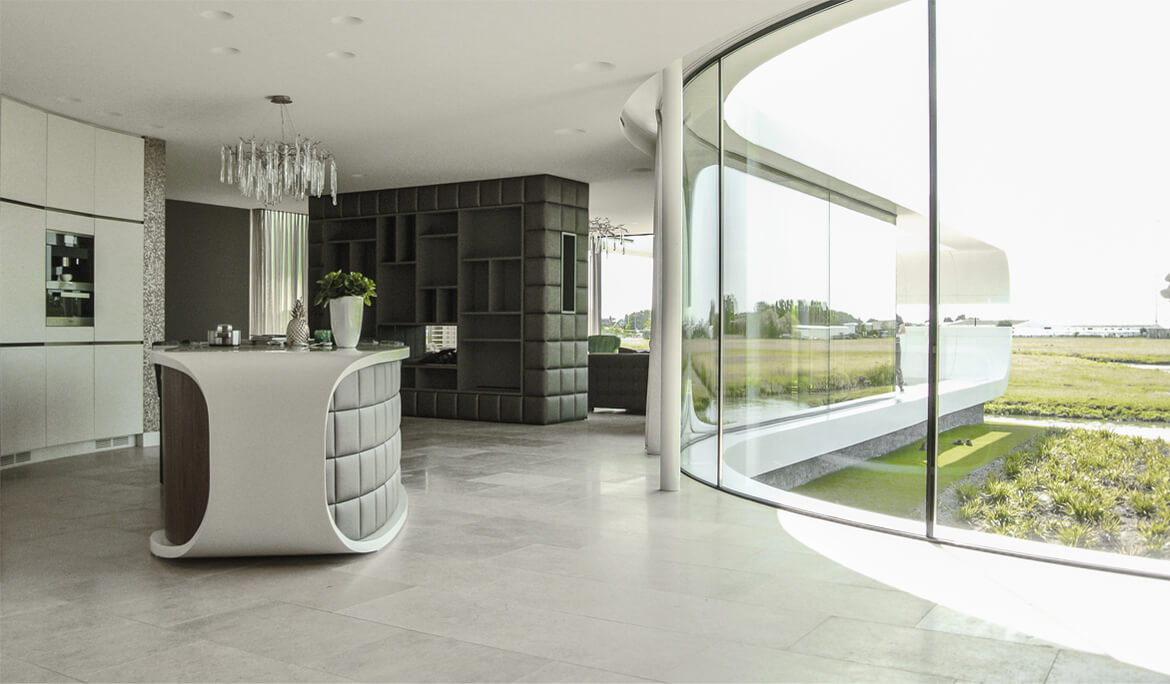 De New Water Villa. Beeld Koen Olthuis
De New Water Villa. Beeld Koen Olthuis
Onorthodoxie
Wat opvalt in Naaldwijk is niet alleen de onorthodoxie van het materiaal, maar ook de vorm. De villa heeft een heel leesbare contour, bijna kinderlijk eenvoudig. ‘Readable architecture’, noemt het bureau dat zelf.
Sensueel, makkelijk na te tekenen en ver weg van de functionele architectuur die in Nederland gangbaar is. Waar vorm altijd een ratio heeft en mooi nooit alleen maar mooi mag zijn. Dit huis is eerder benaderd als een product waarbij vorm en materiaal de dienst uitmaken, dan als een werk van architectuur waar volume en schaal leidend zijn.
Olthuis is opgeleid als industrieel ontwerper en als architect. Het is verleidelijk om in het Zuid-Hollandse kassenlandschap te zeggen: ja-dat-kun-je-wel-zien-ook. Zijn aanpak van de buitenzijde loopt door in het interieur, waar hij hetzelfde materiaal gebruikt als buiten: een keukenblad van gebogen corian, de keukenkastjes en het corian haardmeubel zijn bekleed met gecapitonneerde stof.
De slaapruimtes zitten in het souterrain, omdat boven het maaiveld slechts een beperkt aantal vierkante meters mocht worden bebouwd. De tuin is oorverdovend simpel, met een strookje kunstgras tegen de voet van de gevel aan, om de scheiding tussen het groen en het witte corian zo scherp mogelijk te houden.
De boemerang ligt met de holle kant naar het water en de polder gericht met een doorlopende glaswand die op een exceptionele wijze in een hoek van 90 graden buigt. Dat glas geeft, zowel buiten als binnen, onvermoede weerkaatsingen waardoor je je soms in het lachspiegelhuis van de kermis waant.
De bolle zijde van de villa, gekeerd naar de oprijlaan, is relatief gesloten. De elleboogpunt van de boemerang herbergt de hoofdentree. De bewoners gingen akkoord met de moderniteiten van de architect, maar eisten wel een entree. Dus kregen ze een voordeur met een statig natuurstenen trapje.
Het bochtenwerk is cruciaal. Het zit in het interieur, het glas en natuurlijk in de kopse buitenzijdes, die de villa het karakteristiek geven van twee platgedrukte U’s die op hun zij liggen. De keuze voor die rondingen leidde voor de architect automatisch tot het materiaal corian. Dat kun je verhitten en in een mal gieten, waardoor je volmaakt gladde rondingen krijgt. Iets wat je met steen nooit kunt nadoen,
De binnenruimte voelt prettig aan, door het bochtenwerk ontstaat een natuurlijke compartimentering. Het gebogen glas is spectaculair, maar dat corian is wel heel erg wit. Je loopt constant rond met de gedachte en-wie-moet-dat-allemaal-schoonhouden?
Maar volgens de corianfabrikant is het onderhoudsvriendelijk en duurzaam, hoewel kostbaar in de basisprijs. Voor de vorm van het huis is het corian ononvertroffen. Het is van dichtbij net zo smooth als op de foto. Dat kun je niet altijd zeggen in de architectuur.
De New Water Villa. Beeld Koen Olthuis
Long for a sea change? Buy a house boat
By Alina Dizik
BBC
September.28.2014
When Soren Terkelsen moved to a houseboat with his wife and two young children seven years ago, he wasn’t prepared for a front-row seat of Copenhagen’s winter storms.
“All of a sudden the ship turns into a steel thing that you cannot control,” said the 44-year-old. “We were completely new to this and had a lot of surprises.”
For Terkelsen, taking care of the M/S Arno, a 50-year-old boat that was refurbished into a family home, wasn’t immediately intuitive. In fact, there was much to learn about the new lifestyle.
The boat requires a new coat of paint with the rust scraped off every few years, the septic tank needs to be emptied regularly and there are mooring restrictions that dictate where he can keep the vessel.
Still, living close to the city without the chaos, while enjoying the serenity unique to waterside living—like watching geese and other water birds fly past — is hugely rewarding, he said.
“I really love it,” said Terkelsen, who recently started Copenhagen Boats, a boat-rental business.
For those who’ve long dreamed of living on the water, owning a houseboat is within reach. Many refurbished boats are on the market in waterfront cities including Seattle, San Francisco, Amsterdam, Stockholm and Copenhagen. And, new luxury communities are in various stages of development in Dubai, the Maldives and Miami. Houseboat prices can run from $200,000 into the millions, depending on the location and the level of luxury.
Architects say homes that float on the water can rise and fall with the tides, keeping buyers safe from flooding and rising water levels due to climate change. “It’s a unique lifestyle,” said Rick Miner, a Seattle-based real estate broker who specializes in floating homes and has lived in one for 23 years.
How to find it
After 25 years spent working in the hospitality industry in Vancouver, Canada, Ben de Vries knew he wanted to return to Holland and live in one of Amsterdam’s famous houseboats. But finding a boat wasn’t easy.
In cities like Amsterdam, licensed boats docked within city limits can be difficult to find because there are so few lots along the city’s waterways. After a long search, de Vries bought an old boat in 2001 for €120,000 ($92,850), which didn’t quite fit his idea of a dream houseboat because it was cramped and in need of an upgrade.
But, the old boat was well worth the price, he said, as the purchase included the valuable docking space license, or ligplaats, which in Amsterdam is sold together with the boat. Places to moor the boat in this Dutch city are fixed and cannot be changed to a different location, similar to purchased land. De Vries eventually purchased a new boat for €110,000 ($85,115) to put in the same space.
The hassle was worth it. While some houseboat communities on the city’s most popular canals can be loud, De Vries says he lives in a quieter part of the city and enjoys the diversity of his houseboat community. “They are usually interesting people that live on houseboats,” he said.
He also loves being close to nature. “I see big fish swimming around,” he said. “You’re more exposed to the elements.”
Due to limited docking space, competition for house boats is fierce in most markets, according to Koen Olthuis, founder of Waterstudio, an architecture firm in Deft, Holland that specializes on over-water projects.
Miner says that only six or seven boat properties per year are available for sale in Seattle and range from $700,000 to $1 million. By comparison, in Amsterdam, with an estimated 2,500 houseboats, there are more properties for sale and small older boats can sell for €200,000 ($154,750).
Finding a houseboat on your own can be difficult, so it is advisable to find a real-estate agent that specialises in houseboat sales. In the Maldives, for instance, Christie’s is selling 185 new floating villas, which start at $1 million and are in the first phase of completion, said Olthuis, who helped create the project.
Fees and maintenance
If you’re thinking of taking the plunge, there are some financial considerations to take into account.
The newest floating homes are built on a hollow concrete barge that can be towed to other locations but can’t be moved independently. But, because many floating homes and houseboats aren’t equipped with the engines, mechanics or navigation systems of boats, upkeep costs can be lower than a fully functioning water vessel of a similar size.
Monthly upkeep of your houseboat can cost from $200 to $600 for mooring fees and maintenance. Most owners pay monthly homeowner dues that cover water, sewer and dock maintenance. Those who own their docking spot, don’t pay a monthly mooring fee.
Houseboat owners are required to pay personal property taxes similar to home ownership on land. And, many houseboat communities also provide parking for homeowners as part of the monthly dues. But, in some areas, the saltwater can eat away at the floating home and require expensive upkeep well into the thousands of dollars, so budgeting for longer term, one-off or occasional expenses is also a good idea. When getting a mortgage, insurance in a must and is only slightly higher than homeowners insurance on land, mostly due to more possible weather damage. In the US, houseboat insurance averages about $1,500 annually.
Life on the water
If you think a houseboat will provide solitude, think again. Floating homes have their own neighbourhoods and provide a sense of community with other owners because they are rarely moved from one place to the next.
People “don’t realize how similar it is to normal housing,” said Olthuis, whose firm focuses entirely on overwater properties. “People still think it’s something futuristic.”
However, some of the comforts of home differ and require some adjustment. For one, bringing groceries or items back to the boat is often an acquired skill because you need to walk along a jetty. Odd jobs around your houseboat will also be different to those on land. A septic tank filled with used water needs to be properly emptied and cables that attach the boat to land must be checked frequently to prevent a boat coming loose during high winds.
Decorating is also a unique consideration. Some regular furniture can be an odd fit into the houseboat’s curved rooms, says Terkelsen, which means furnishing it could be more interesting — but more expensive — than a house on land. Some companies including the US-based Bradd and Hall specialize in furniture in marine settings.
How to finance it
Financing a home on the water is different than purchasing a home on land.
In the US, smaller banks located near houseboat communities such as those in the Northwest will help buyers get a mortgage, but most homes are bought for cash, said Miner. With a mortgage, most boat purchases require a 20% down payment, he said. Such mortgages require special inspections that can cost up to $800 and involve a dive survey of the outside part of the home, which is a cost covered by the buyer and should be factored into closing costs.
In Amsterdam, to close on sale, boats need to be examined in a shipyard outside of the water. Not all banks around the world offer houseboat mortgages. Instead, buyers may need to take out a secured loan, which is similar to a mortgage and gives more favourable terms because the borrower pledges collateral for the loan.
An added return
With so many curious travellers, one perk to owning a houseboat is that they are easy to rent out.
This year, Terkelsen and his family moved back on land to start renting out their Copenhagen houseboat online. Bookings are already filled for the next three months, providing a healthy income stream.
Renting out a room on his Amsterdam boat also helps De Vries offset the extra expense of living on the water, while allowing him to share his love of the water with travellers. Guests enjoy the novelty of booking a room at Ben’s Boat and Breakfastand being only 10 minutes away from the center of town, said De Vries who rents one of his bedroom suites for €95 ($123) per night.
“It’s a rewarding business,” he said.

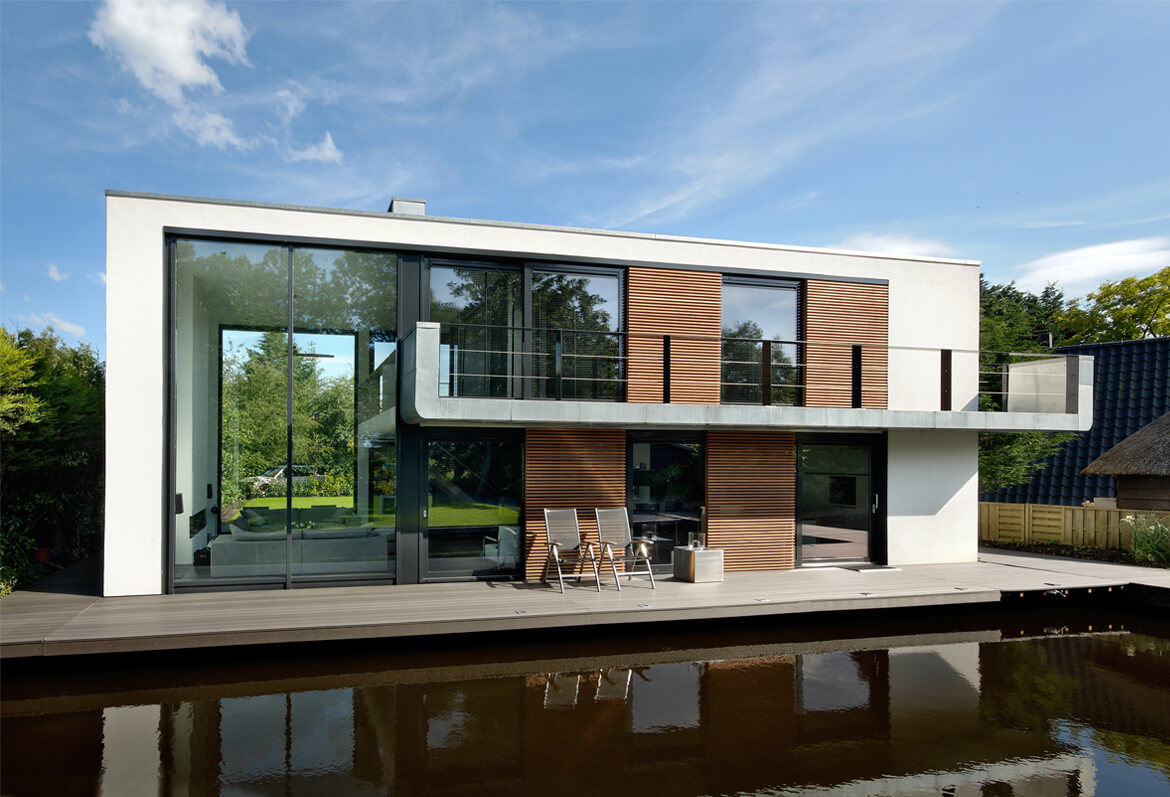
Architects Envision The Future Of Nature Preservation, And It’s Beautiful
By Katherine Brooks
Huffington Post
September.18.2014
“The waterfront no longer places a limitation on city expansion, in fact it is the new frontier!”
So begins the description for “Sea Tree,” a futuristic nature reserve imagined by Netherlands-based architecture firm, Waterstudio. The wild design, still in the rendering phase, would bring floating steel structures to the shores of urban centers. And inside those steel towers, would be vegetated layers of habitable space, meant for both flora and fauna to flourish in spaces where land and wildlife is scarce.
 According to Waterstudio, Sea Tree would be built using the “latest offshore technology,” similar to that used in building oil storage towers in the open ocean. But instead of housing oil, the towers would play home to plant and animal species, working to reduce CO2 emissions along the way.
According to Waterstudio, Sea Tree would be built using the “latest offshore technology,” similar to that used in building oil storage towers in the open ocean. But instead of housing oil, the towers would play home to plant and animal species, working to reduce CO2 emissions along the way.
“Large oil companies will have the opportunity to give back by using their own intellectual property and resources to donate Sea Trees to a community in need,” Waterstudio wrote in a statement to HuffPost, “showing their concern and interest in preserving the distressed wildlife.” It’s a utopian endeavor, sure, but it offers already over-populated metropolises a chance to conserve wildlife within city limits.
The design, inspired by a project in Holland in which ecologists asked the firm to design a green oasis that could not be disturbed by humans, is meant for any waterfront, from riverbanks to sea shores. The height and depth of the structures would be custom constructed according to their specific locations, and would be anchored to the seabed with cables. The birds, bees, bats, and other small animals seeking refuge on a Sea Tree would be left untouched by humans, as would the plant life.
“Most of the innovation on land has been done already,” Koen Olthuis, Waterstudio lead designer and co-founder, explained to The Creator’s Project. “The truly innovative possibilities are found on water… The idea is that we cover the tower with fertile soil and then simply take our hands off of it and let nature do its thing. That’s the exciting part: to see what kind of effect such a green enclave will have.”
When asked when we could expect Sea Tree to become a reality, Ankie Stam at Waterstudio responded to HuffPost: “We’re now in the process of [finalizing] location (with city councils) and finance (with oil companies), for which we have several options. When this is completed we can start construction.”
Waterstudio sent us a selection of images that show the possibilities of Sea Tree. Let us know your thoughts in the comments. And for other floating architectural feats, check out Cristian Ehrmantraut’s prototype for a floating platform that filters the ocean and absorbs plastic.

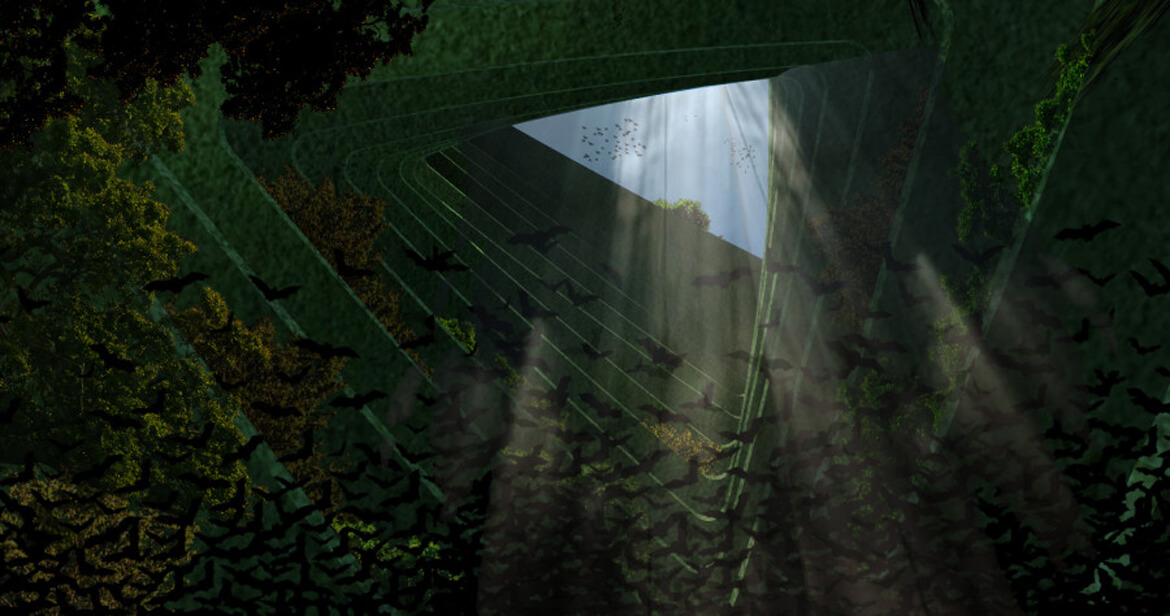

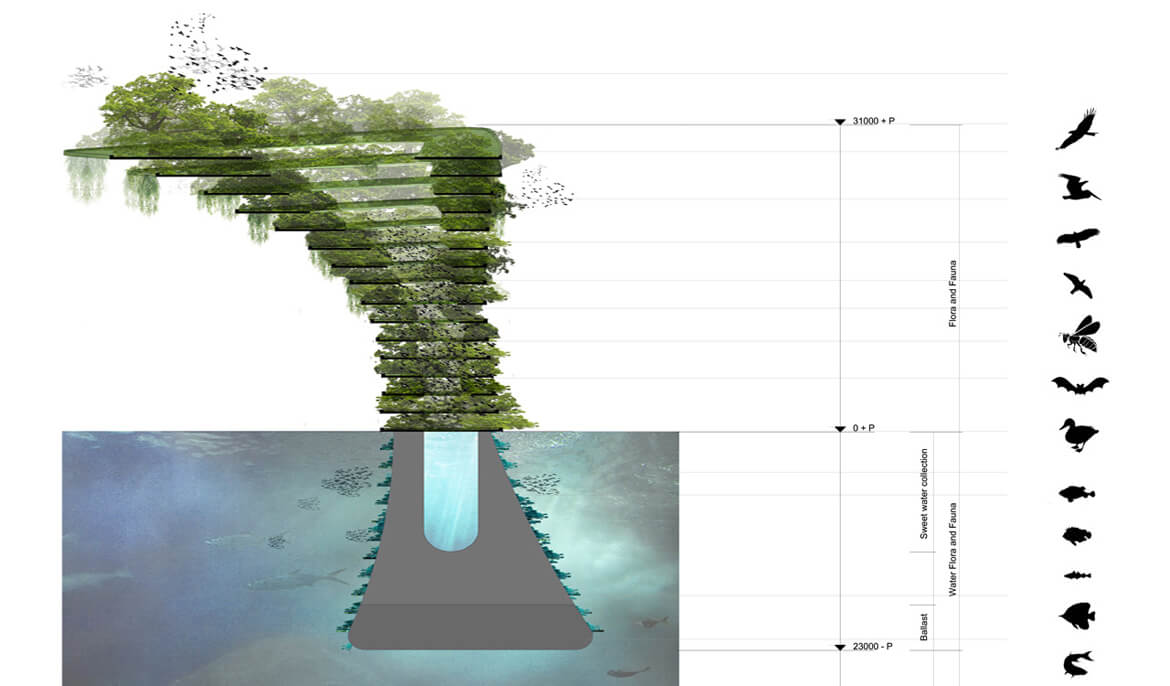

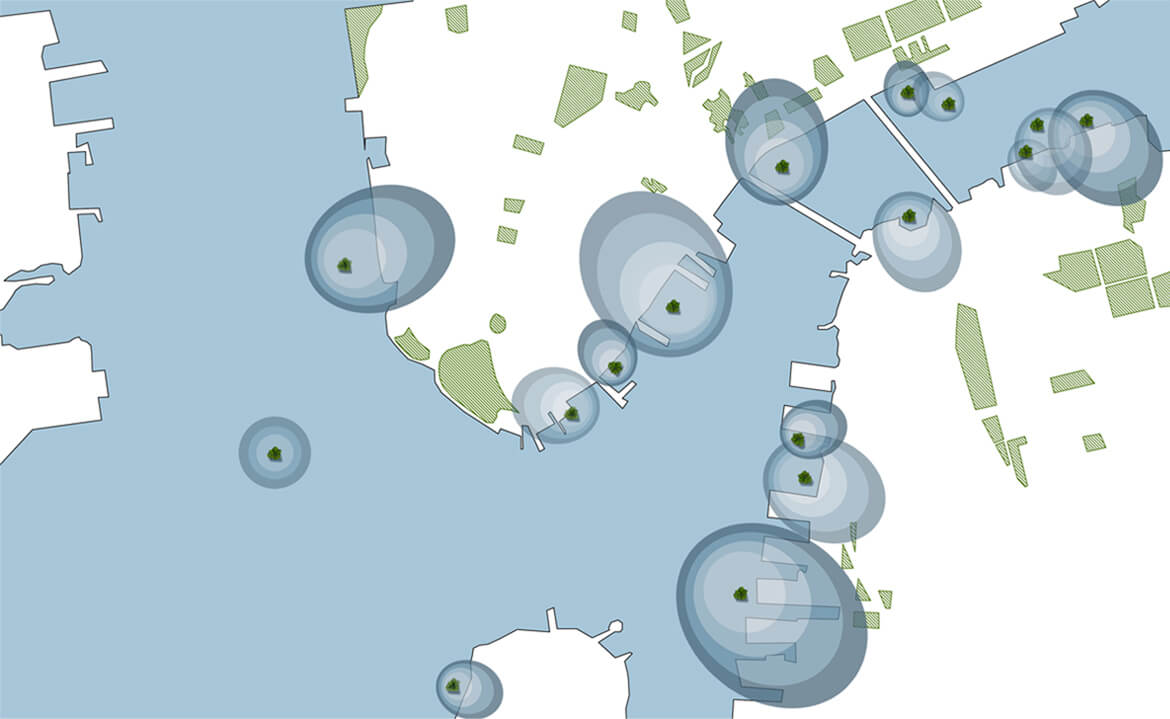
The skyscraper NATURE RESERVES: Architects hope to build £790,000 multi-storey habitats above and below water in cities
By Victoria Woollaston
Daily Mail
September.19.2014
With green spaces being replaced by building sites and large-scale developments around the world, architects are constantly looking for ways to replace them.
One such concept, devised by a team Dutch-based architects, uses towering structures built with layers of green space in which flora and fauna could live.
Called the Sea Tree, the structures would have space for birds and animals to live above ground, and would be bedded under the sea for fish and coral to inhabit.
‘Urbanisation and climate change put a lot of pressure on available space for nature in city centres,’ explained Waterstudio.
‘New initiatives for adding extra park zones to a city are rare.
‘Yet these kind of additional habitats for birds, bees, bats and other small animals could bring a lot of positive green effects to the environment of a city.’
Waterstudio’s concept is called the Sea Tree and it was designed to add high density, green spots to towns and cities.
According to designs, it would be a floating structure built using layers where animals and birds can live.
The structures would not accessible by man, and would be built using offshore technology and resources, similar to how oil storage towers are built and powered out at sea.
The idea is that large oil companies would donate a Sea Tree, and the trees could be built on rivers, seas, lakes and harbours.
The height and depth of the Sea Tree could also be adjusted depending on where it was placed.
To hold it in place, Waterstudio claims Sea Trees would be moored to the sea bed with a cable system.
Under the water, the Sea Tree would provide a habitat for small water creatures or, if the climate allowed for it, artificial coral reefs.
As well as providing a home for nature, the green structures could help reduce CO2 emissions produced by cities and towns.
‘The beauty of the design is that it provides a solution, and at the same time does not cost expensive space on land.
‘While the effect of the species living in the Sea Tree will affect a zone of several miles around the moored location.
‘For as we know, this floating tower will be the first floating object 100 per cent built and designed for flora and fauna.’
The firm said inspiration came from a project in Holland where ecologists asked them to provide habitats for animals which couldn’t be disturbed by people.
The cost for the Sea Tree design is estimated at €1 million (£786,100), and this would depend on water depth, mooring facilities and transport from construction site to the chosen city.
Further cost differences would depend on the preferred flora and fauna.
Waterstudio said it is in the process of finalising the location of the trees, and discussing costs with oil companies. Once these are complete, they will start construction.






